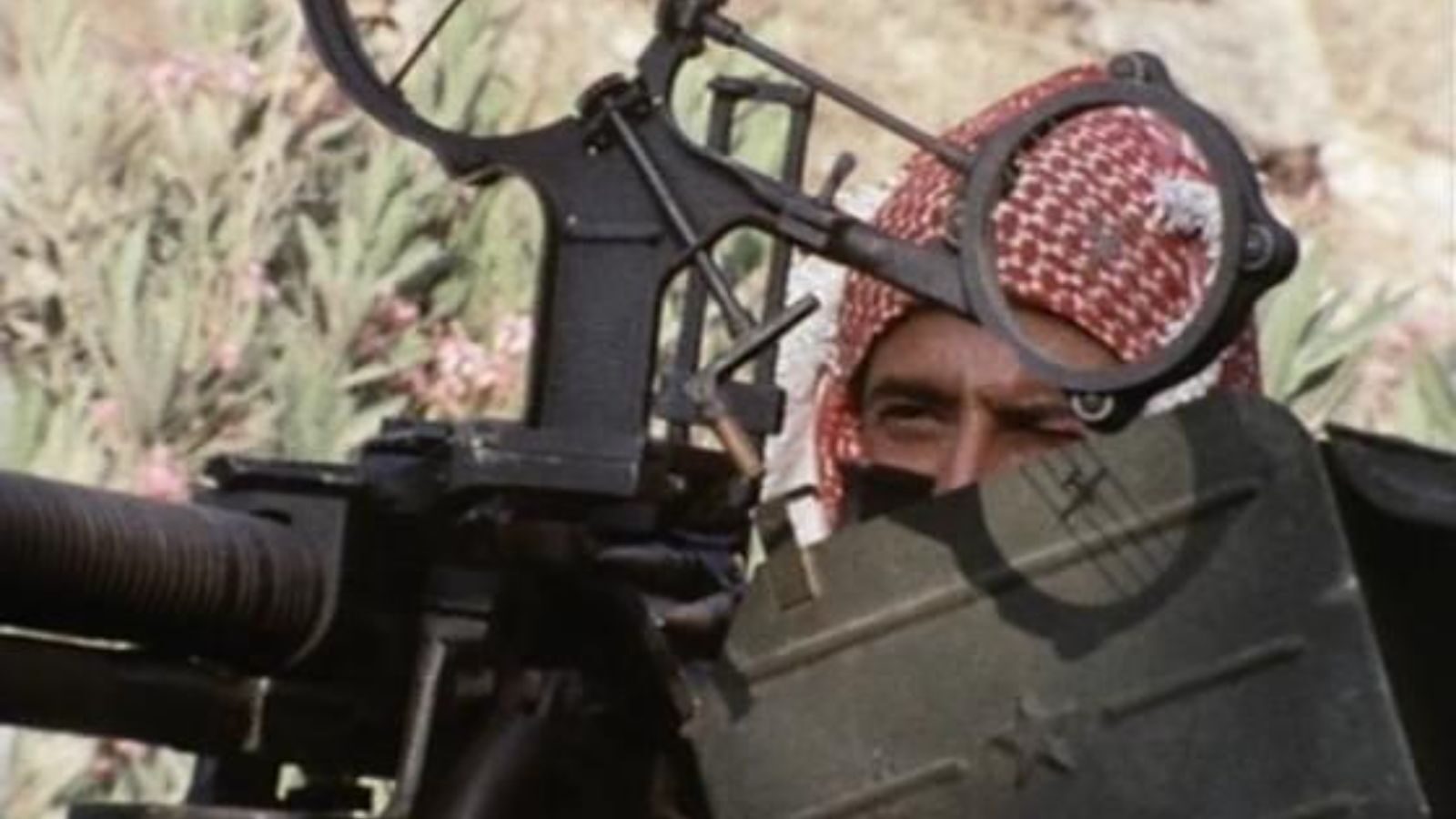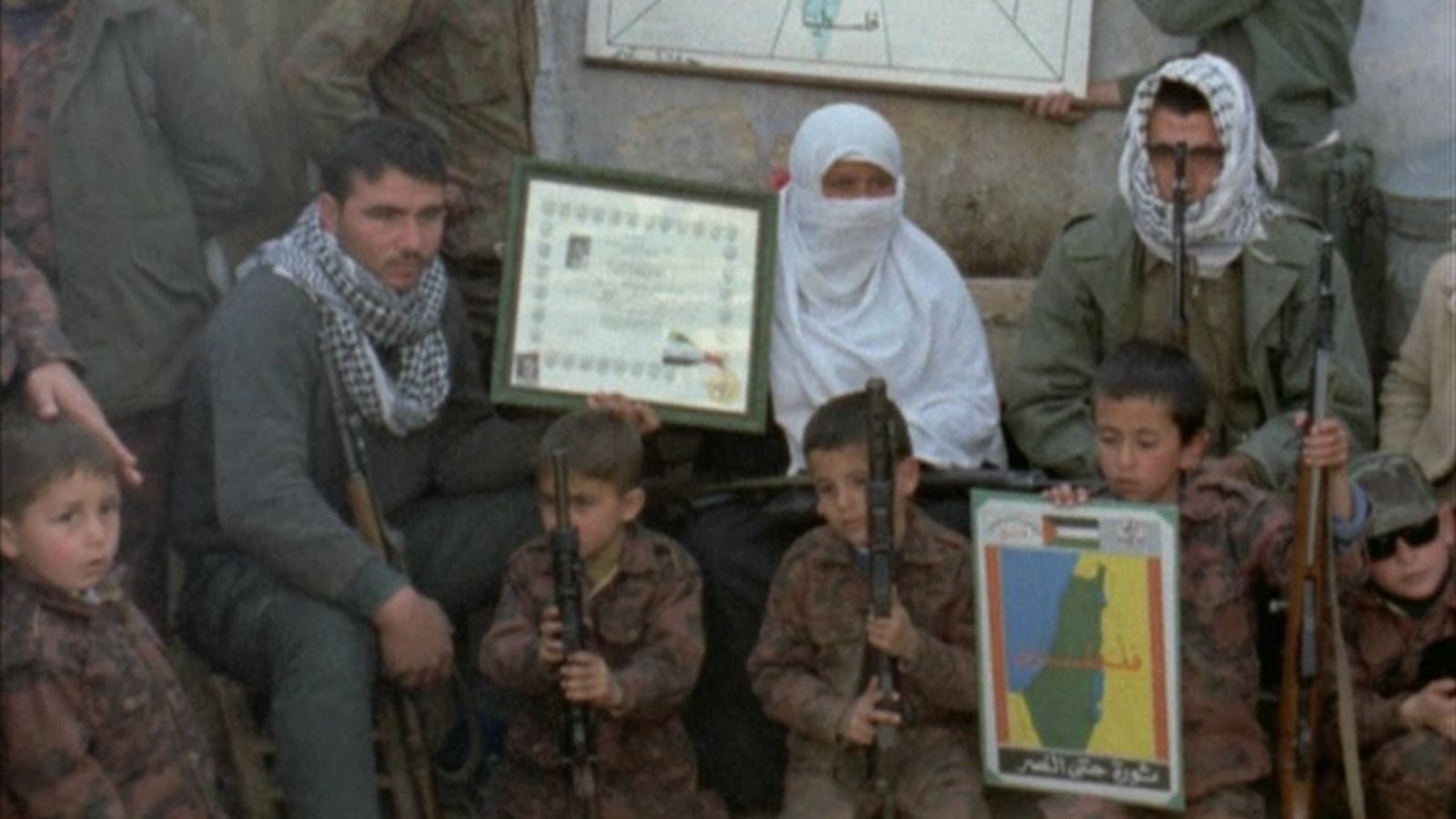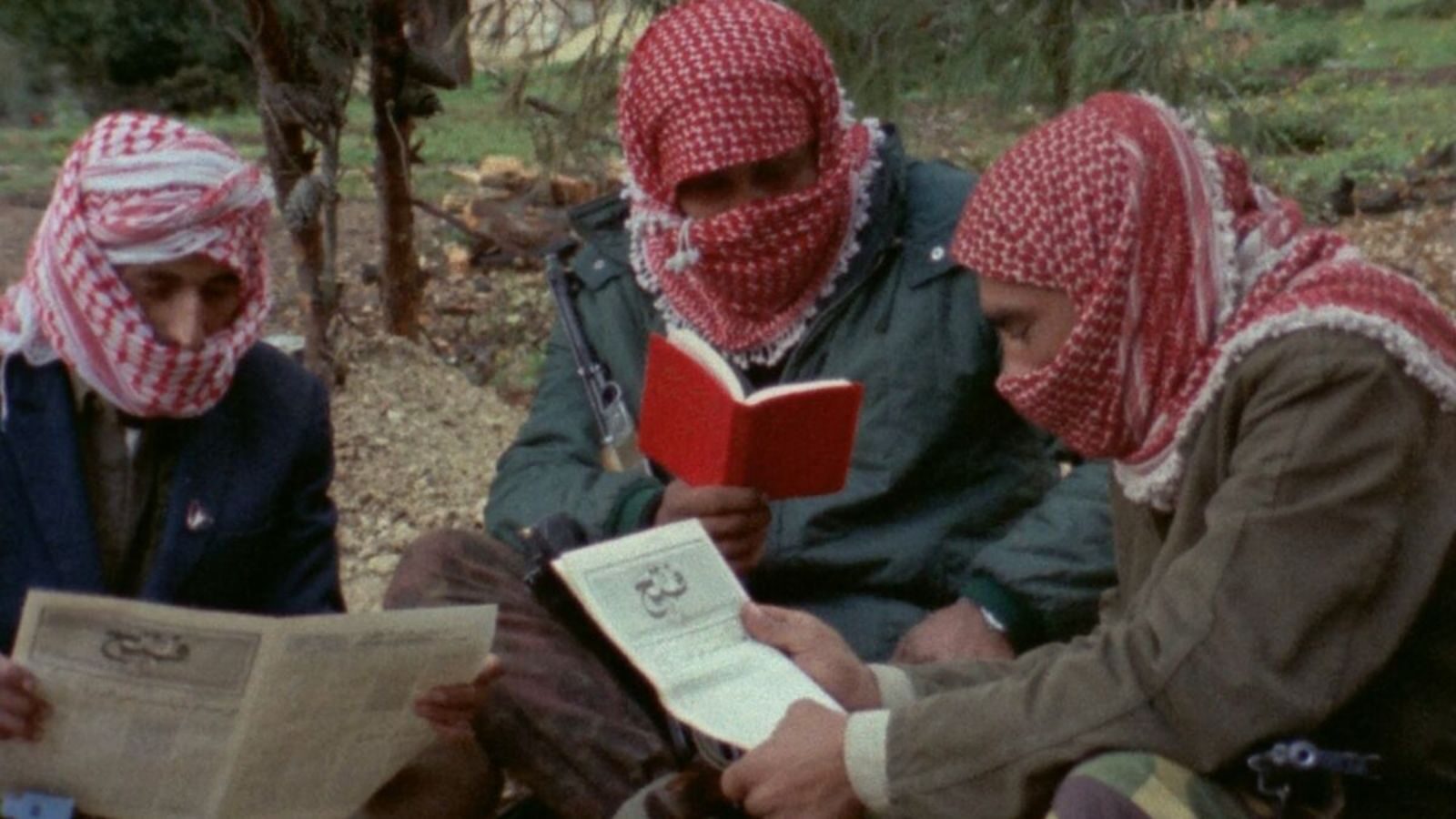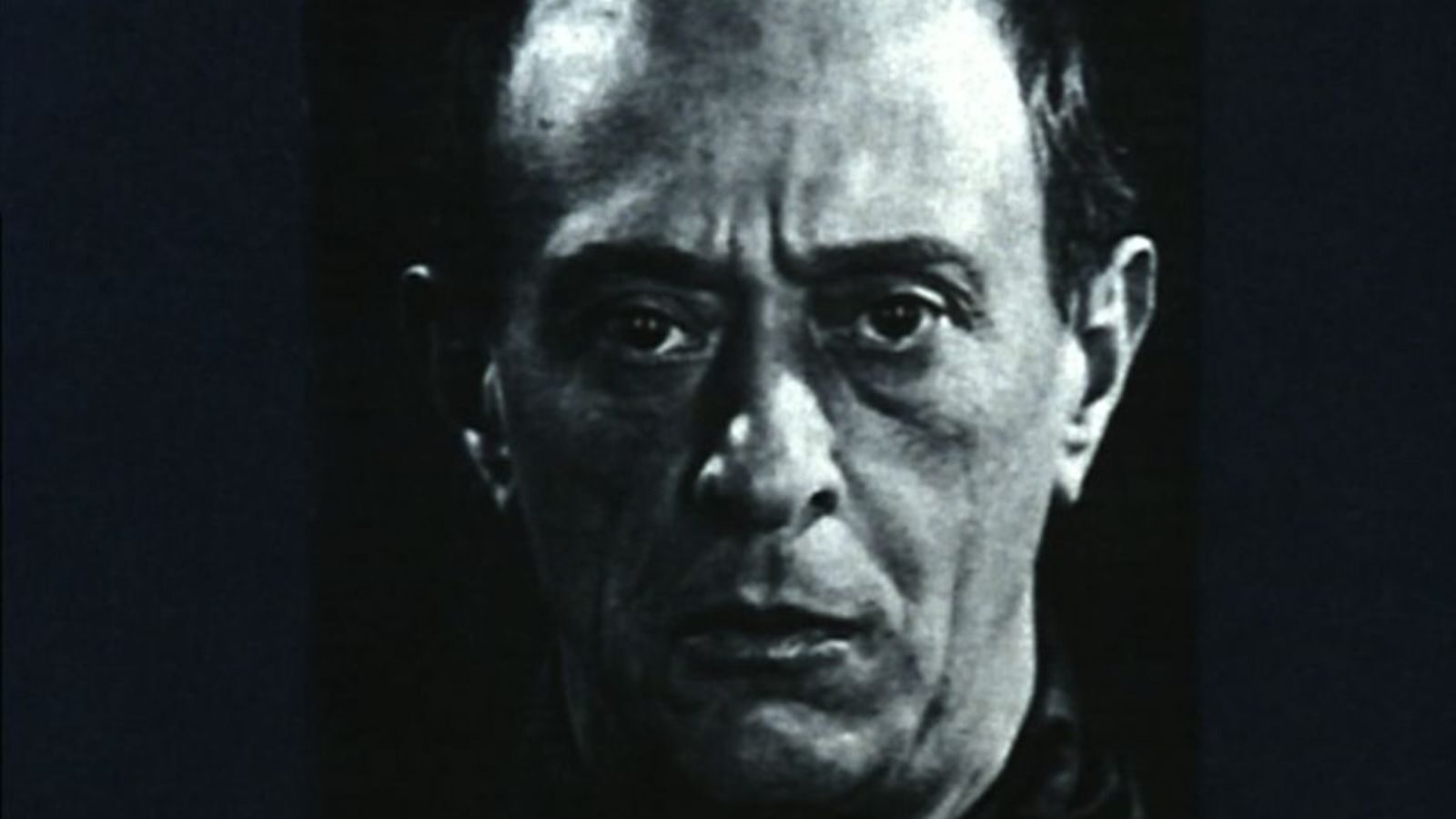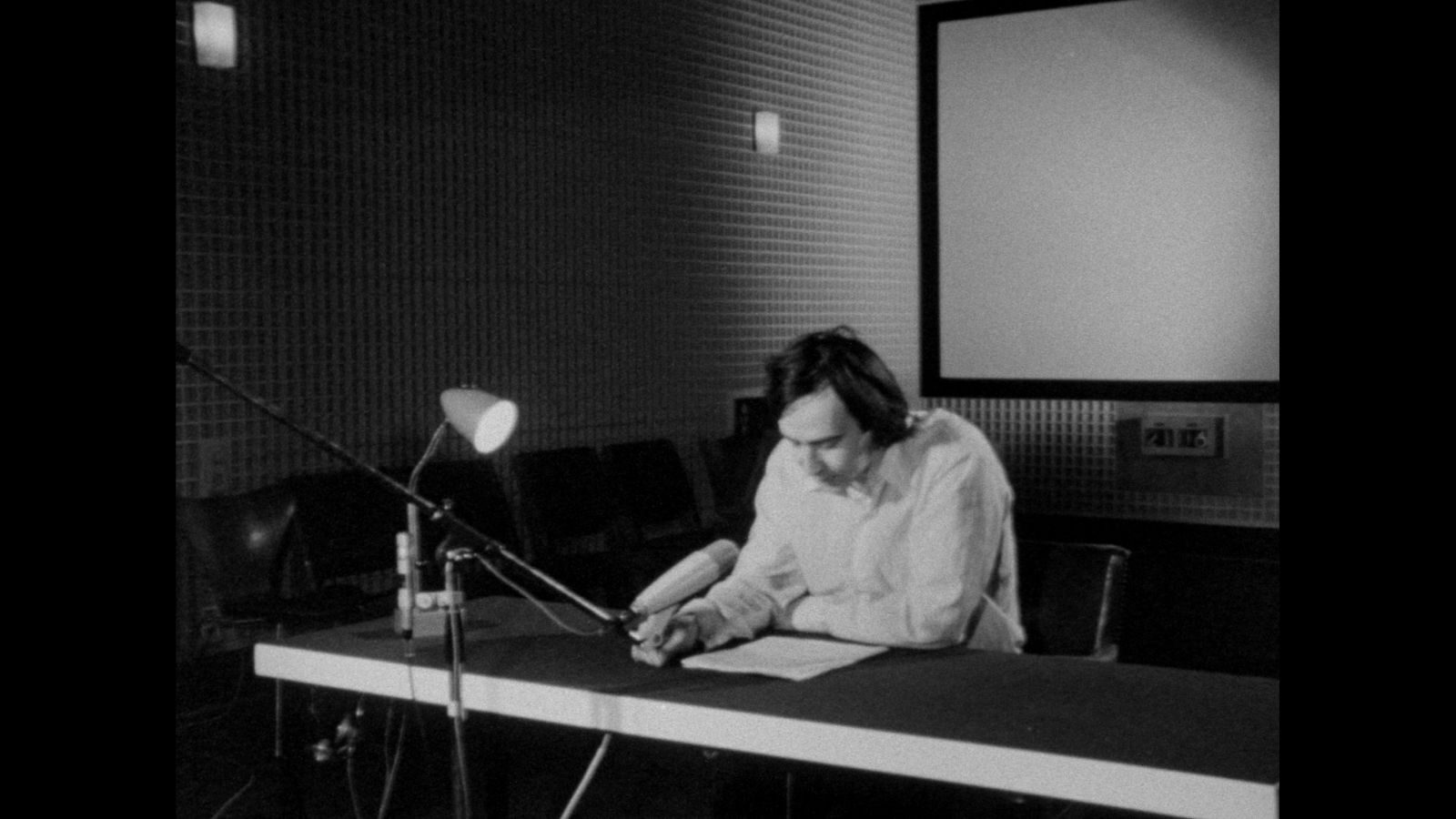Here and Elsewhere
In 1969, Jean-Luc Godard and Jean-Pierre Gorin were commissioned by the Arab League to make a film on the Palestinian struggle for independence, but abandoned the project after laboring for two years over the footage gathered on multiple trips to the Middle East. Upon returning to the material in 1974 with his new collaborator Anne-Marie Miéville, Godard was shocked to learn that he was originally provided politically distorted translations of the words spoken on camera by Palestinian fighters—men who had since died in the Jordanian civil war. Spurred by this realization of the initial film’s shortcomings, Godard and Miéville added their own voices to the footage to produce a fascinating analysis of the production of political images. Yet the supreme irony of Here and Elsewhere is that while it sharply deconstructs its own images—notably when Miéville takes Godard to task for the way he filmed a pro-Palestinian woman—it appears blind to the wider question of its partisanship. It remains an extraordinary example of Godard’s ability to think history through cinema—and, as Serge Daney noted, to pay tribute to the dead.
Screening with:
Introduction to Arnold Schoenberg’s “Accompaniment of a Cinematic Scene”
Jean-Marie Straub, 1972, Germany, 17m
German with English subtitles
Readings from Arnold Schoenberg’s analysis of anti-Semitism and Bertolt Brecht’s description of the inextricable link between fascism and capitalism lead into a montage of archival images set to the music Schoenberg wrote to evoke “threatening danger, fear, catastrophe.”

